In 2018, the Guardian quoted the mayor of Pontevedra in Spain about the decision to make the city center car-free: “The historical center was dead… There were a lot of drugs, it was full of cars — it was a marginal zone.” To save the city, at first the city planners tried to address the problem of traffic, but then they decided to simply get rid of cars.
The results have been spectacular. The city itself is widely regarded as a model among car-free cities, with numerous studies devoted to aspects of its experience. After the city went car-free, the downtown population jumped. As of 2018, there had been no traffic deaths since 2009. The mayor was elected four more times.
Taiwan should be paying attention.
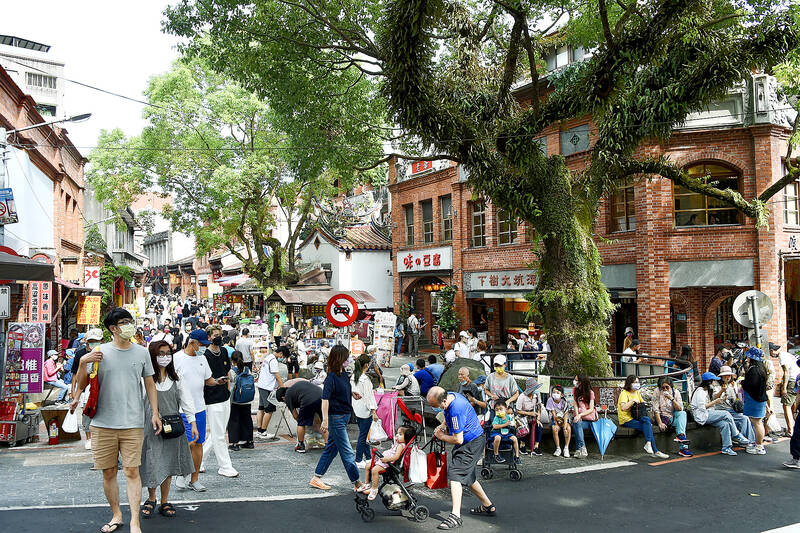
Photo: Tu Chien-jung, Taipei Times
BENEFITS OF GOING CAR-FREE
Most of the benefits of car-free cities are well known. For example, Taiwan usually has over 400 pedestrian deaths annually. If our careless drivers became car-less, those numbers would fall.
Greater livability? Lower noise and air pollution? Increased health and vitality of the residents and the spaces they move about in? The experience of car-free cities around the world attests to these benefits.
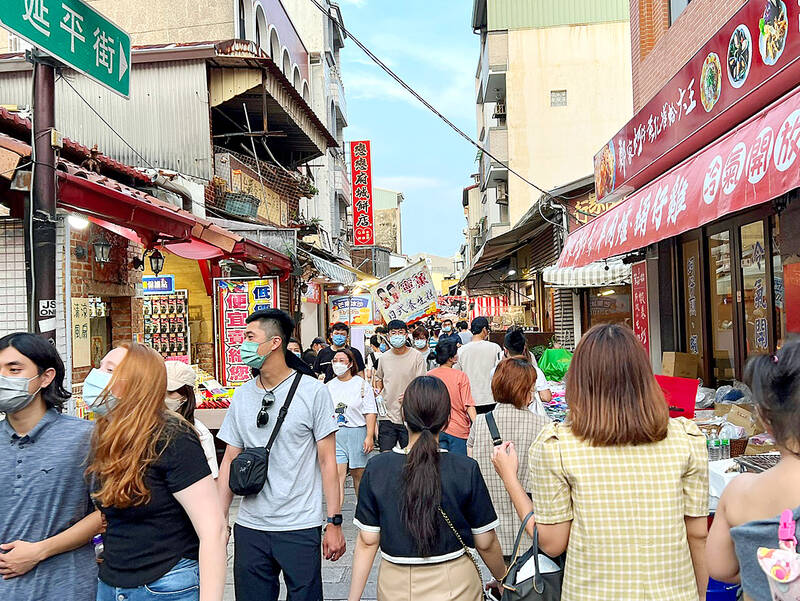
Photo courtesy of the Tainan Tourism Bureau
Denizens of car-free environments also experience improved social interactions, a benefit to all, but especially to the oft-neglected elderly. The massive increase in walking and cycling that ensues leads to lower CO2 levels, also an effect of denser urban spaces. Suburbs kept alive by cars are carbon nightmares.
But there are other effects that might warm Taiwanese hearts. Reduced air pollution is associated not only with health benefits but better cognitive performance. For children, that means better school performance. Traffic noise is associated with depression, anxiety and suicide. Our cars are killing us in countless ways.
Studies show that one of the most common reasons for traffic congestion is cars searching for a place to park, an inevitability in Taiwan’s cramped streets. That lack of space also drives scooters up on the sidewalk to park and drive, there to injure thousands of pedestrians annually.
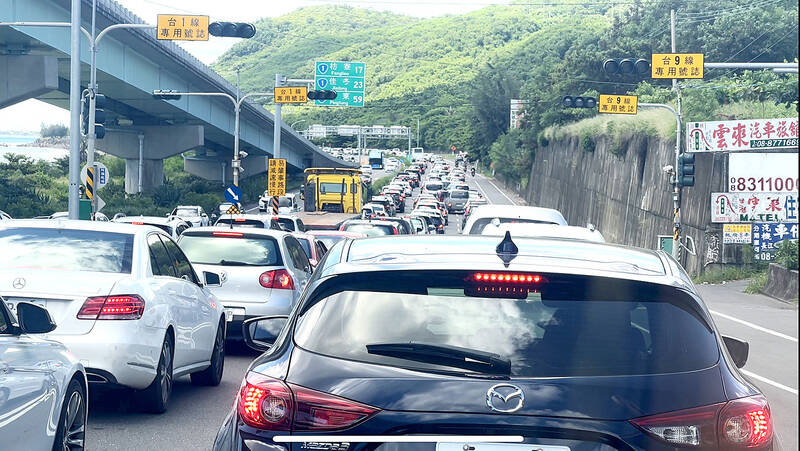
Photo: Chen Yen-ting, Taipei Times
Taiwan’s mom-and-pop stores have been relentlessly killed by convenience stores. Taiwanese consumers hate walking, and prefer to bounce quickly in and out of the store, because they are rushing to and from their 60-90 minute commutes.
Revitalized downtowns would help address this issue, especially in older areas crowded with small, family-owned storefronts. A New York City Department of Transportation study found that retail sales rose 49 percent on 9th Avenue after a protected bike lane was put in. A study last year by analysts at Yelp showed that consumers showed greater interest in restaurant areas that were temporarily without cars due to pandemic restrictions.
A bank analysis of car-free areas in Madrid found not only a 9.5 percent increase in retail sales in areas with significant car restrictions, but a city-wide increase of 3.3 percent. Car-free is so powerful, even areas with cars benefit.
Such data should help assuage fears that businesses would lose out if cars disappeared.
Taiwan is almost ideal for a car-free switch, with its high-speed rail line and extensive train and bus network. Moreover, the nation’s towns and cities almost all host small, dense city centers with small storefronts, all potentially very walkable.
PILOT PROGRAMS
Car-free cities would be possible in many of Taiwan’s satellite towns and in the crowded, built-up areas around train stations. Pontevedra has a population of just over 80,000. Smaller, older towns with cramped city centers, like Fengshan (鳳山) in Kaohsiung and Fengyuan (豐原) in Taichung, would make ideal candidates for pilot programs.
Fengyuan even has two layers of ring roads, the second a barren four-lane concrete ribbon whose obvious purpose is forwarding the developmentalist ideal that cities exist only as destinations for cars. The infrastructure and space for parking lots outside the city, as in Pontevedra, already exist. The railroad station is right in the center of town. Perfect.
In the last few decades the government has completed bypasses that run major roads around many smaller communities like Changbin (長濱) in Taitung and Yuanli (苑裡) in Miaoli, instead of through them. Since such towns are small and easily walkable, it would not be difficult to pilot car-free areas in them, yet permit easy access from the bypass roads.
Taitung city itself would be ideal, save for the poorly-located train station. The city center can be walked across in 20 minutes.
One could easily imagine expanded programs that take in cities like Tainan and Hsinchu. It’s a delight to walk through the area north of the train station in Hsinchu even with its current traffic levels. If the area between the train station and the City God Temple were freed of cars, it would be an urban paradise.
POPULATION BOOST
Another benefit that areas that go car-free often experience is a population boost. Miaoli, Taitung and other rural and mountainous areas are losing population to the cities. One way to address that issue might be to go car-free. Older small towns in those areas, like Yujing (玉井) in Tainan with its 15,000 people or Yuli (玉里) in Hualien (pop. 25,000) would make great places to experiment with a car-free downtown.
Miaoli city, with 87,000 people, is quite comparable to Pontevedra. The city center is only a few kilometers across, easily walkable. The point on the escarpment where the 13 peaks above the city offers staggering views. Amazingly, no one seems to have proposed a gondola for that, a place that could actually use one (having proposed one, I am now officially eligible to run for the local city council). Probably because — you guessed it — there is no room with four lanes of ugly concrete there.
In the mid-2000s, the government sprinkled artist villages around Taiwan, a transparent attempt to summon into being by policy what was not growing organically. Such villages were nice, but they lacked the supportive atmosphere of walkable districts full of cafes, bookshops, restaurants and, above all, open and safe public spaces for socializing and performance.
Car-free promises all that.
Notes from Central Taiwan is a column written by long-term resident Michael Turton, who provides incisive commentary informed by three decades of living in and writing about his adoptive country. The views expressed here are his own.

Climate change, political headwinds and diverging market dynamics around the world have pushed coffee prices to fresh records, jacking up the cost of your everyday brew or a barista’s signature macchiato. While the current hot streak may calm down in the coming months, experts and industry insiders expect volatility will remain the watchword, giving little visibility for producers — two-thirds of whom farm parcels of less than one hectare. METEORIC RISE The price of arabica beans listed in New York surged by 90 percent last year, smashing on Dec. 10 a record dating from 1977 — US$3.48 per pound. Robusta prices have
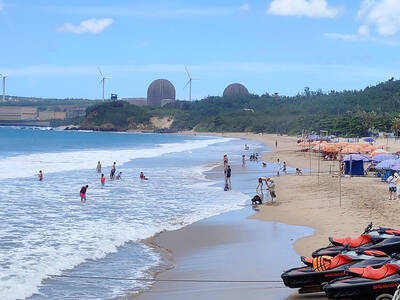
A dozen excited 10-year-olds are bouncing in their chairs. The small classroom’s walls are lined with racks of wetsuits and water equipment, and decorated with posters of turtles. But the students’ eyes are trained on their teacher, Tseng Ching-ming, describing the currents and sea conditions at nearby Banana Bay, where they’ll soon be going. “Today you have one mission: to take off your equipment and float in the water,” he says. Some of the kids grin, nervously. They don’t know it, but the students from Kenting-Eluan elementary school on Taiwan’s southernmost point, are rare among their peers and predecessors. Despite most of
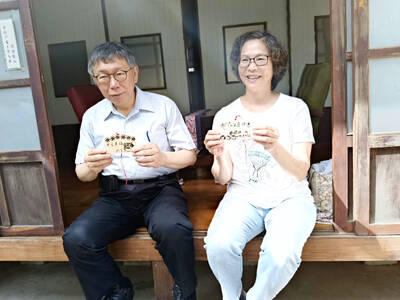
The resignation of Taiwan People’s Party (TPP) co-founder Ko Wen-je (柯文哲) as party chair on Jan. 1 has led to an interesting battle between two leading party figures, Huang Kuo-chang (黃國昌) and Tsai Pi-ru (蔡壁如). For years the party has been a one-man show, but with Ko being held incommunicado while on trial for corruption, the new chair’s leadership could be make or break for the young party. Not only are the two very different in style, their backgrounds are very different. Tsai is a co-founder of the TPP and has been with Ko from the very beginning. Huang has
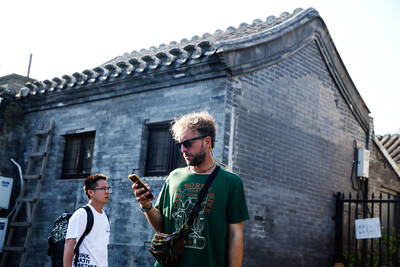
A few years ago, getting a visa to visit China was a “ball ache,” says Kate Murray. The Australian was going for a four-day trade show, but the visa required a formal invitation from the organizers and what felt like “a thousand forms.” “They wanted so many details about your life and personal life,” she tells the Guardian. “The paperwork was bonkers.” But were she to go back again now, Murray could just jump on the plane. Australians are among citizens of almost 40 countries for which China now waives visas for business, tourism or family visits for up to four weeks. It’s